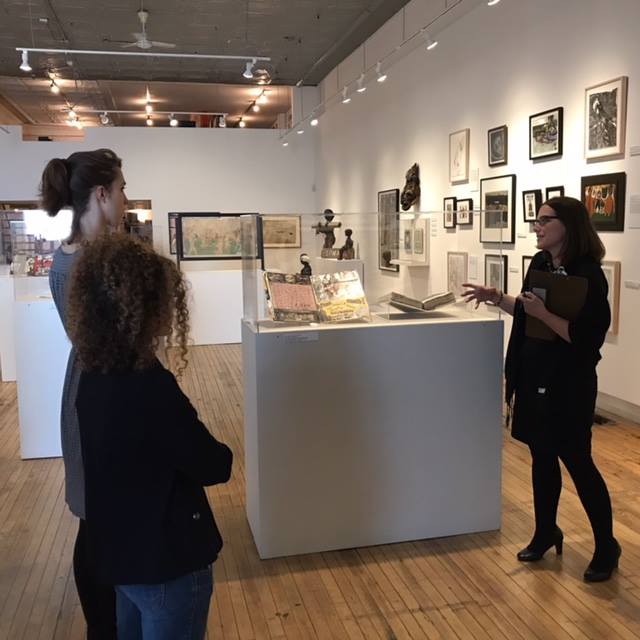Darger + War: Violence and Loss in Self-Taught
@ Intuit: The Center for Intuitive and Outsider Art
756 N Milwaukee Ave, Chicago, IL 60642
Opening Sunday, December 3rd, from 1PM - 2PM
On view through Sunday, December 10th
Take a stroll with Curator Alison Amick through the Darger + War: Violence and Loss in Self-Taught Art exhibition in its final week on view. Amick will discuss her vision, themes and artists featured in the show.
$5 voluntary admission
ABOUT THE SHOW:
War has impacted artists across time — from the classically trained to those who turned to art therapy to cope with post-traumatic stress disorder. Darger + War: Violence and Loss in Self-Taught Art explores the complex intersection of art and war through the lens of self-taught art, and investigates war as a narrative, as experience, and as a state of mind.
The world of Henry Darger (1892-1973) was fraught with war. During his lifetime, the United States fought in numerous wars: the Spanish–American War, World Wars I and II, the Korean War, and the Vietnam War. Though Darger never saw conflict or served abroad (he was drafted in 1917 and honorably discharged three months later), his artworks both anticipate and reflect the violence of warfare. Darger had a lifelong avid interest in the American Civil War, one inspiration for his 15,000-page good-versus-evil novel known as In the Realms of the Unreal, which chronicles a conflict of Darger’s making, the Glandeco-Angelinian War, in which the seven Vivian Girls are heroines in the war against child slavery.
The private nature of Darger’s “historical” war contrasts with the public nature of Dr. Charles Smith’s African American Heritage Museum & Black Veterans Archive, first created in Aurora, Illinois, and, later, in a second environment in Hammond, Louisiana. The Archives were created to memorialize African Americans who perished in Vietnam and to commemorate and educate visitors about African American history and civil rights issues. His complex, built environment—both narrative and immersive—turns toward history and shared memory as a direct result of Smith’s Vietnam War experience.
What is it about war and its aftermath that compels artists to create? Despite never having served in combat, Darger reflects the realities experienced by many touched by war. Betty Zakoian and Roy Ferdinand turned to art to remember those who had perished and to commemorate the experience of the Armenian Genocide, the Holocaust and New Orleans street violence, respectively. Veterans Bill Crist, Richard Saholt and Gregory Van Maanen turned to image manipulation and art making as a means of processing their experiences and posttraumatic stress disorder.
This exhibition is not intended to be a comprehensive exploration of war and self-taught art but, rather, to prompt all of us to ask questions and explore the inner-connectedness of humankind.
Official Website
More events on this date
Tags: Alison Amick, Chicago, Darger + War: Violence and Loss in Self-Taught, Henry Darger, Intuit: The Center for Intuitive and Outsider Art, near west side

« previous event
next event »